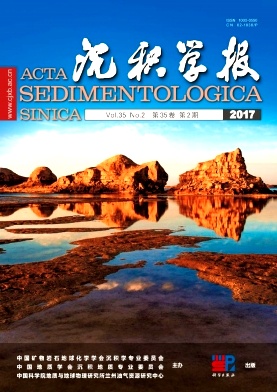Characteristics and Controlling Factors of Buried-hill Inner Volcanic Reservoir: An example from the Cretaceous in Qinhuangdao 30A Area, Offshore Bohai Sea, China
doi: 10.14027/j.cnki.cjxb.2017.02.012
- Received Date: 2016-06-21
- Rev Recd Date: 2016-11-03
- Publish Date: 2017-04-10
-
Key words:
- Bohai Sea /
- Qinhuangdao 30A area /
- buried-hill /
- volcanic rock /
- reservoir characteristics /
- controlling factors
Abstract: Focusing on the complex characteristics and controlling factors of buried-hill inner volcanic reservoir, this paper takes the Cretaceous volcanic rocks in Qinhuangdao 30A area of Bohai Sea for example. The space type, filling stage, diagenetic evolution and controlling factors of buried-hill inner volcanic reservoirs were studied based on core observation, thin section identification and scanning electron microscope analysis. The lithology of volcanic reservoirs in the study area is mainly explosive facies andesitic volcanic breccia. The reservoir space can being classified as primary pore, secondary pore and fissure. As main primary pores, the gas pores experienced early filling stage and late filling stage, leading to primary pores being sharply reduced. According to the filling minerals and interaction cutting relation, the fractures are categorized as four periods while the late fractures were more weakly filled than early ones. The reservoirs experienced three diagenetic stages:syndiagenetic stage, epidiagenetic stage and burial diagenetic stage. The volcanic hydrothermal activity during syndiagenetic stage influenced the reservoirs most and is the primary cause for the reservoir physical properties becoming worse, while the weathering and leaching in epidiagenestc stage and the dissolution in burial diagenestic stage improved the reservoir physical properties to a limited extent. The development of unfilled effective fractures in reservoir is the main controlling factor, resulting in the differences of volcanic reservoir physical properties and oil-gas production capacity in the study area. The structurally high part close to volcanic conduit contains more fractures than slope zone, but the fractures were more affected by hydrothermal activity and filled by minerals, leading to less effective fractures, poorer reservoir permeability and much lower oil-gas production capacity than that in slope zone. Structure position, formation period and size of fractures controlled the development of effective fractures. The fractures are mostly distributed within a certain range nearby major faults and those developed in area far away from volcanic conduit and formed late with small width were less filled and are effective fractures. The area with those fractures developed is the favorable region of high-quality reservoirs and target for oil-gas exploration.
| Citation: | GUO Ying, WANG YueChuan, WEI AJuan, WU HaoMing, YE Tao, GAO KunShun, ZENG JinChang. Characteristics and Controlling Factors of Buried-hill Inner Volcanic Reservoir: An example from the Cretaceous in Qinhuangdao 30A Area, Offshore Bohai Sea, China[J]. Acta Sedimentologica Sinica, 2017, 35(2): 343-357. doi: 10.14027/j.cnki.cjxb.2017.02.012 |






 DownLoad:
DownLoad: